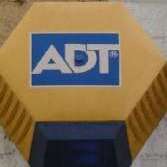
antinode
Trade Full Member-
Posts
1,638 -
Joined
-
Last visited
-
Days Won
11
antinode last won the day on January 16 2018
antinode had the most liked content!
About antinode
- Birthday 06/05/1986
Profile Information
-
Gender
Male
Location
-
Location
Greater Manchester
Recent Profile Visitors
8,385 profile views
antinode's Achievements
-
Reliable Push Notifications System
antinode replied to Lighthouse's topic in Control Panels (Public)
What issues are you having with Texecom Connect? I have it at home (with a Webway for the proper signalling) and 99% of the time the notifications come through within 10 seconds. The odd occasion it's taken a few minutes but as above, with any push service you are relying on lots of seperate links in the chain, not many of which you can be sure will always work. Apple/Samsung don't provide any guarantees that their push service will work wether the app is free or not so you're at their mercy. Saying that, haven't there been problems with Dualcom in the not too distant past with outages? -
The amber LED on these is for the PIR, flashing is PIR masked but on solid is PIR fault if I recall.
-
I've only ever seen the plastic versions with a Friedland and strobe inside. AFAIK, the only metal Shorrock box was the blue metal unit, with the lock on the front of it. I think you'll do well to find someone who has kept either of those to use as a service spare I think it'd be prudent to swap it out for a new sounder as soon as so that you have a working system again.
-
CTEC XFP - LOOP INTEGRITY FAULT
antinode replied to Josh Adams's topic in General Security & Fire Queries
Integrity fault IS and open circuit on the loop (C-Tec speak) As above, spin the loop and see how far around it gets, it should stop at the break. It’s probably a busted isolator, hence you don’t have any missing devices. Alternatively, the XFP has a ‘blink device LED’ function, you can blink them from end A or end B. Wherever they stop blinking will be after the O/C. -
You need to connect the black and yellow coming from the bell to a 2K2 resistor. The other end of the 2K2 resistor goes into zone 1, then program zone 1 as tamper and label it as such with the description. Also, as the instructions say, your existing bell box (looks like a Gardtec/Risco XS3D) will use more power than the Enforcer is capable of supplying in alarm, so you should set the bell box to SCB mode (usually a jumper link to move over on the bell box PCB)
-
Run a 16 ohm speaker from the speaker output on the keypad (if you've got the LCDL type, if you haven't I would recommend as the screen is much better on these), it'll make a loud enough racket in alarm condition and as and addition, you'll get louder entry/exit tones to boot. Failing that, I had to run an internal speaker from the spare pairs on a PIR on my own system which was first fixed by the house builders, not ideal but I've never had an issue with it to be fair.
-
Quite a bit of kit to be hanging off an Accenta...
-
Replacement panel/keypad recommendations
antinode replied to Griffmaster's topic in !!..DIY Installers..!!
3 cores between the panel zone being split and the splitter. As I said, would be a problem swapping to an Accenta if the splitter was feeding, say, two PIRs. Obviously not an issue with a decent panel. Not a big fan of the 9651, but someone mentioned the Euromini (totally forgot), which is great and gives you 10 zones. -
Replacement panel/keypad recommendations
antinode replied to Griffmaster's topic in !!..DIY Installers..!!
The Abacus was a good, reliable system for its time. The Accenta has always been somewhere near the bottom end of the market, although it's reliable enough. I would look at the Galaxy G2-20, 12 zones onboard, easy to use. If you buy contacts and PAs with built in resistors it would be a straightforward swap (your Pyronix detectors will already have them built in, just fit the relevant jumper links and alter the wiring slightly) Don't forget a new 7ah battery. Out of interest, where did you put the splitters with the Abacus system? If they're near the panel, it's easy enough to make the existing cabling work with most systems, but if you've put them "in the field" so to speak and only run a 6 core to the splitter, you may not have enough cores for the system to work properly with something like the Accenta. -
Accenta ABI supported EOL, there's also the iD Accenta that catches a few people out, as it seems...
-
The ends of the 8K2's are shorted together when the circuit is clear, so it's 4K1 when clear going to 8K2 when active. Throw in another 8K2 across the mask contacts for 16K4 in mask and 12K3 in fault. Used to install a few before they brought out a DT with the built in resistors, an absolute nightmare if I remember. Used to come across quite a lot of detectors badly wired by others, leading to the two ends of the 8K2 resistors shorting out, so the detector could never signal an alarm back to the panel.
-
Fire panel - When to use these types of outputs
antinode replied to julio's topic in Members Lounge (Public)
Sounds like a U.S. setup, it may be best to consult someone in your locality with regards to regulations etc, as this is primarily a UK site and we work to different standards and with differing equipment. -
Off the top of my head, I seem to remember you need to have a user code on the system set up to control the area that the keyswitch needs to set/unset (even if areas aren't used on the system!) Aslong as the above is done and the zone is programmed as normal or biased keyswitch (I think with the Monitor zone type), it should work OK. I've got one setup, I'll call in tomorrow and double check how it's programmed.
-
HD is the resolution of the picture (very generalised summation, but basically speaking) IP and coax are just the transmission mediums for HD (and non-HD) pictures. Not all IP is HD
-
Have they left the cameras? If so, it would be worth checking their power requirements and video output before you purchase a power supply and DVR. Chances are they're standard analogue 12vdc cams, although 24vac cameras are quite common, as well as HD-SDI, TVI and CVI. If you need a 12vdc PSU, this would do the job fine: https://www.securitywarehouse.co.uk/catalog/genie-2-amp-12v-dc-switch-mode-power-supply-p-3094.html





